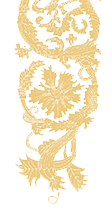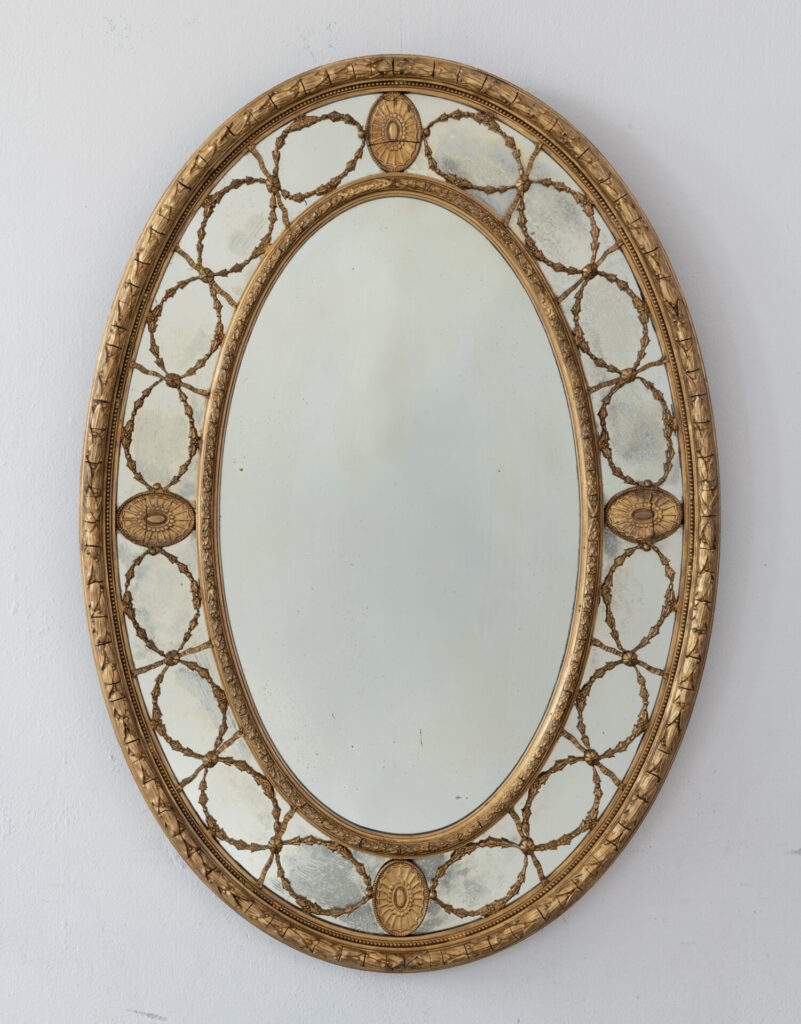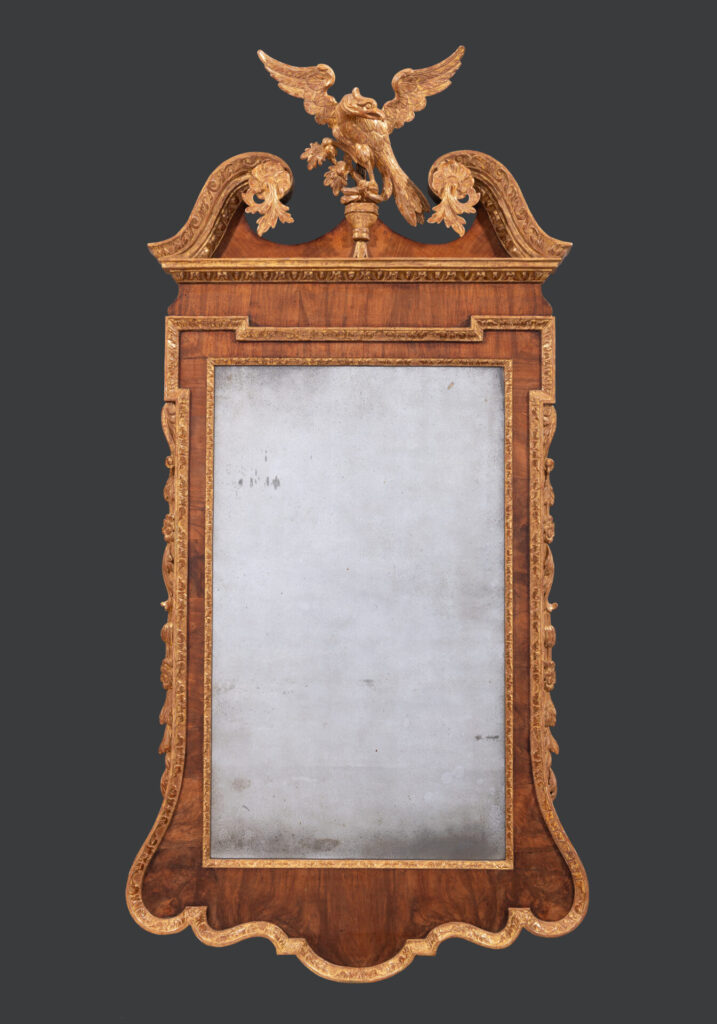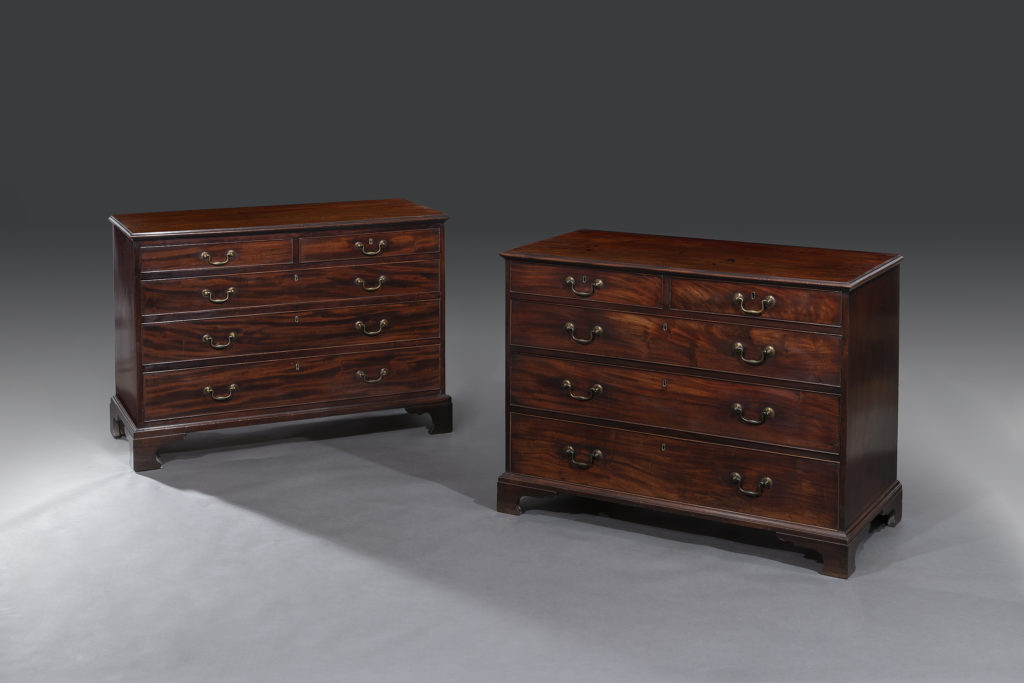Rare Find Regency Carved Giltwood Convex Girandole Mirror probably made by Thomas Fentham
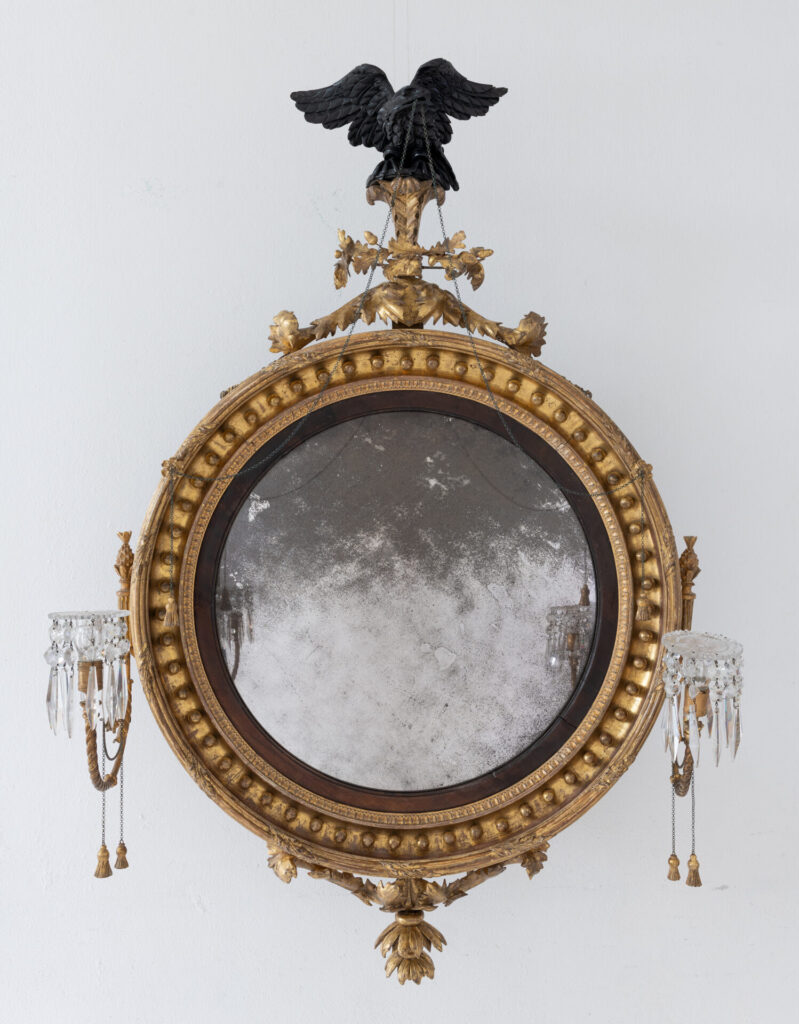
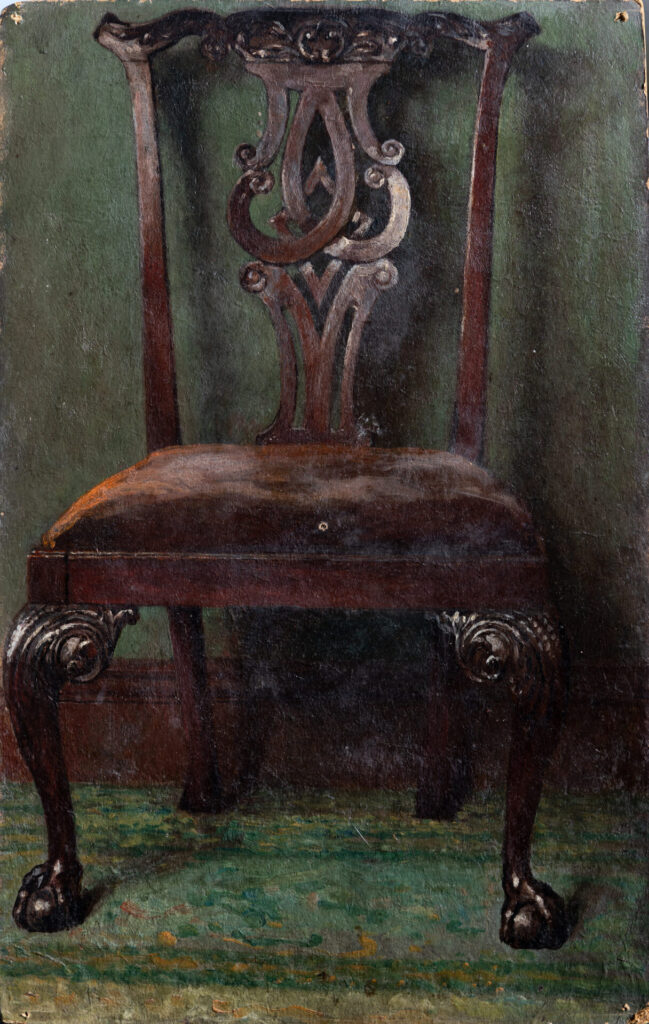
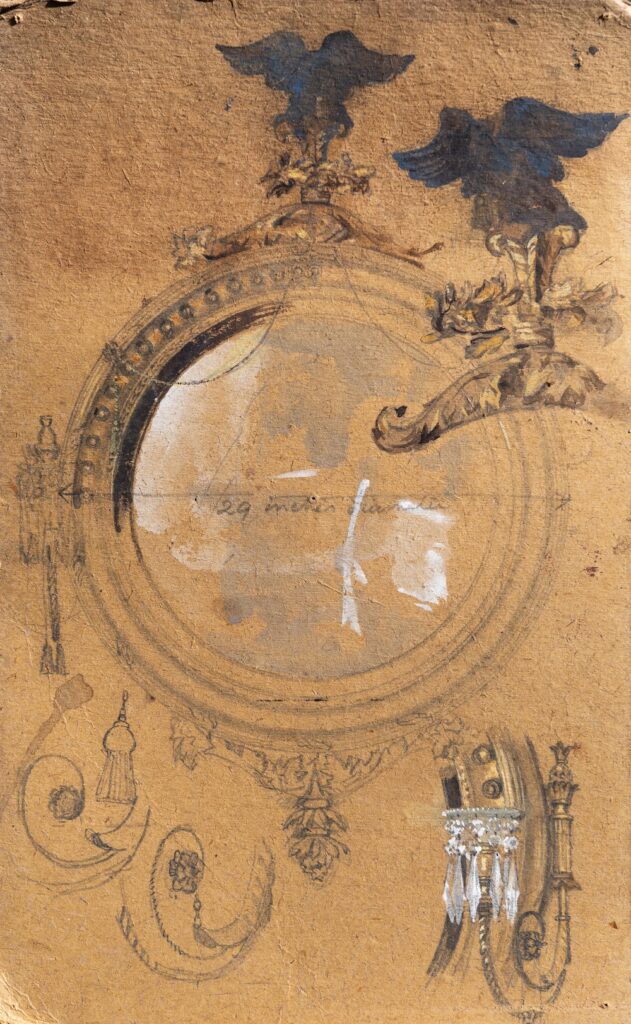
Rare Find Regency Carved Giltwood Convex Girandole Mirror probably made by Thomas Fentham
Engflish
circa 1805 - 1815
The mirror was previously owned by Sir John Sell Cotham. The pictures below show a small board of oil work and a sketch of the mirror. The work is on one piece of board, front is the chair the reverse is the mirror sketch.
John Sell Cotman (1782-1842) is one of the most important artists from the golden age of English watercolour painting. Whilst working under Dr Thomas Monro (1759-1833) (see lot 66), Cotman came under the influence of Thomas Girtin (1775-1802), and the latter's influence can be seen in Cotman’s early work. However, Cotman's later work demonstrates a startlingly original approach. Miklos Rajnai wrote of Cotman, ‘Haydn once said his years of isolation in the court of Eszterhaza had forced him to be original. Cotman’s isolation was of a different more desperate kind, and if it did not force him to be original it perhaps drove him to remain so. In its inventiveness and range, over a career of forty years, Cotman’s originality is still one of his most astonishing qualities.’ (M. Rajnai, John Sell Cotman 1742-1842, London, 1982, p. 17).
The present watercolour dates from the mid to late 1830s, when Cotman’s work was again innovative and exciting. It combines Cotman’s key qualities of a romantic response to the picturesque along with his almost abstract vision for design or, as Rajnai notes, ‘an ability to convey complex representational information with daring economy of means.’ The arches of the aqueduct are almost flat planes of colour, yet the eye is drawn through the arches by means of shadows to view a row of trees placed on a surprisingly low and wide horizon. The effect is both beautiful and arresting, with a modernity of form and a textured colour palette, realised by his experimental and distinctive technique of mixing watercolour and flour paste.
This watercolour depicts the Claudian Aqueduct between the Monte Coelio and the Palatine, right in the heart of Rome but transposed here to a rural location. This particular viewpoint of the aqueduct is based on an engraving, which differs from Piranesi's etching of it.
Literature
John Sell Cotman (1782–1842)
Has works at the Tate Gallery
(b Norwich, 16 May 1782; d London, 24 July 1842). English landscape painter (mainly in watercolour) and etcher. He moved from Norwich to London in 1798, aged 16, and became a member of Dr Monro's circle. As far as is known, he had no formal tuition in art, but by 1800 he was already accomplished enough to have six of his watercolours accepted for the annual Royal Academy exhibition. Between 1800 and 1805 he made several sketching tours to Wales and Yorkshire and these resulted in some of his finest works. They did not bring him much success, however, and in 1806 he returned to his native city, where, together with Crome, he became the most important representative of the Norwich School. As well as depicting local scenery, he made several trips to France, which bore fruit in Architectural Antiquities of Normandy (1822), one of various books he illustrated with his etchings.
In 1834 he moved to London to become professor of drawing at King's College, a position he held until his death. He was delighted to be offered the post, as he often had difficulty in making a living with his work and he was in debt at the time. Throughout his life he was also subject to periods of melancholia and despondency. Cotman's early watercolours, such as the celebrated Greta Bridge (c.1805, BM, London; a later version, 1810, is in the Castle Mus., Norwich), include some of the greatest examples of the classic English watercolour technique, showing remarkable boldness and sureness of hand. He used large flat washes to build up form in clearly defined planes and shapes of almost geometrical simplicity. In his later years, however, his style became much more flamboyant; he sometimes mixed flour or rice paste with his watercolours to produce an impasto that echoed the effects of oil paint. Throughout his career he also painted in oils, but this side of his work has been overshadowed by his achievements as a watercolourist.
Dimensions
Height 127.00cm (50 inches)
Width 76.00cm (29.92 inches)
Diameter 76.00cm (29.92 inches)
Width Framed 84.00cm (33.07 inches)
Stock No: 11633
